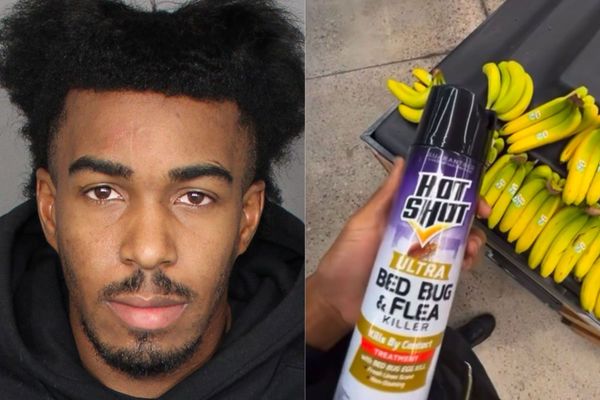It's not just earnings season but butterfly trade season as well. Why? Because as volatility shifts higher, the likelihood of larger outsize moves becomes greater. That gives butterfly trades higher probabilities of being realized for larger profits. Though earnings are already behind it, ExxonMobil has the potential for increased volatility as energy concerns take an important role in the presidential race. Here's how to set up a butterfly trade on XOM stock without the earnings catalyst.
Volatility And The Average True Range
When the CBOE Volatility Index begins to rise, we can count on the following:
- Option prices will increase as the market makers prepare for wider moves.
- Larger drawdowns will occur if the charts go against us in an unexpected move or if we have sold options or taken a directional move that does not transpire.
- We still face the risk of a slow death due to time decay if we buy the options outright and the stock fails to move substantially.
Enter the double butterfly.
I want to remind readers the premise for working in the market: to position ourselves in the case of the "obvious" move yet also prepare for a possible outsize move. That's key. As volatility slowly creeps north, the potential for outsize moves increases.
With an earnings catalyst, we often use an expected range to help calculate strikes to use for a butterfly trade. But with earnings behind XOM stock, where do we turn?
I like to use the Average True Range (ATR) on the monthly chart to help clarify my goals for holding a position through September.
The current monthly ATR for XOM stock is 7 with a stock price around 118. Roughly a 6% ATR.
Setting Up The XOM Stock Butterfly Spread: Part I
Let's look at the first part of the butterfly for XOM stock:
- Buy to open one XOM stock Sept. 20-expiration call with a 125 strike price
- Sell to open two XOM stock Sept. 20-expiration calls at 135
- Buy to open one XOM stock Sept. 20-expiration call at 145
The trade creates a debit of 94 cents per set of contracts, or $94 for a 100-share block based on recent trading. This creates a maximum profit of $906 per set of contracts. How do we get that? The distance between strikes less the debit or 10 – 0.94 = 9.06. Then multiply by 100 for the 100 shares per contract.
Butterfly Spread, Part II
Here's the second butterfly spread, this time using puts, for XOM stock:
- Buy to open one XOM stock Sept. 20-expiration put with a 110 strike price
- Sell to open two XOM stock Sept. 20-expiration puts at 100
- Buy to open one XOM stock Sept. 20-expiration put at 90
The put butterfly will deliver a debit of 89 cents or $84, based on recent trading. This creates a maximum profit of $911 per set of contracts (10 – 89 = 9.11).
Putting Them Together
When we take both sides of the trade (preparing for either long or short to deliver profits), we add both debits together and subtract them from the distance of the strikes = $10 – $1.83 = $8.17 for the maximum profit. The maximum loss is limited to the cost of the debit, in this case 1.83.
The break-even price is difficult to calculate when you are taking both sides of a position. But we can say that at expiration if the stock is at least either greater than $126.83 or less than $108.17 (outside of commissions) the position will deliver a profit.
Remember that the middle strike is the sweet spot for the trades to maximize returns, so consider setting alerts on XOM stock at the middle strikes.
The strategy gives us a few choices to exit the trade.
- A swift acceleration of price either up or down in the next three weeks will maximize the profit opportunity. No reason to be greedy, sell the spread.
- A slow deterioration of both butterflies as the stock does nothing and we sell the spread at our personal loss limits.
- We use a time approach. Sell the spread irrespective of behavior in the week before expiration. This ends up being my approach most of the time, to be transparent.
Defending The Trade In XOM Stock
Stock hunting using fundamental and price strength within The IBD Methodology is where I firmly plant myself under the current economic backdrop. I use technical analysis to find ideal buying opportunities in conjunction with the tools for strength seen on IBD.
The goal of the double butterfly? Take advantage of increasing implied volatility, giving us more opportunities to participate in an outsize move.
Let's now identify key chart levels in XOM stock. The monthly upside resistance zone sits right around 125. The support sits near 105, which should bring buyers to the chart.
Scenarios For Double Butterflies
- XOM stock moves to either of the middle strikes and we close the position at the test of the middle strike to collect the gains. This is ideal.
- XOM stock moves too much. It goes wildly outside the range of the butterflies and loses much of its value with a move well outside the ATR or average true range for the month. That will most likely force us to exit the trade.
- Stock sits in its current range and our butterflies erode setting up our provisional loss limit and we exit the trade.
As with all trades, consider what you like about holding the position in the first place and consider your risk carefully. Be patient and allow price action to move around a range of your stops.
Anne-Marie Baiynd is a 20-year veteran trader of stocks, options and futures and is the author of "The Trading Book: A Complete Solution to Mastering Technical Systems and Trading Psychology." She holds no positions in the investments she writes about for IBD. You can find her on X at @AnneMarieTrades







